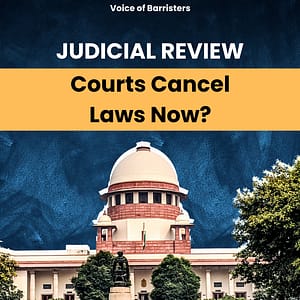FORGERY AND PROVISIONS IN IPC, 1860
4 min readForgery is defined under Section 463 of the Indian Penal Code. Whoever makes any fake document or incorrect electronic record or part of a document with an intention to cause damage or injury to the public or to any person, or to support any claim or title, or to cause any person to share property, or to enter into any express or implied contract, or with a purpose to commit fraud or with the knowledge that fraud may be accomplished, commits forgery. Forgery, therefore, can be described as a means to achieve an end; the end is an instance of action or scheme fabricated to mislead someone into believing a lie or inaccuracy.
According to section 463 of IPC, A person is declared to make a false document when-
Firstly, who dishonestly or fraudulently makes a sign, seal performs a document or part of a document makes any mark indicating the execution of a document, with the intention of causing it to be believed that such document or part of a document was made signed sealed or executed by the authority was not made, signed at a time at which he knows that it was not made sealed or executed.
Secondly, who without legal authority dishonestly or fraudulently by withdrawing or contrarily reconstructs a document in any material part thereof after it has been made himself or by any person whether such person is alive or dead at the time of such alteration.
Thirdly, whoever dishonestly or fraudulently causes any person to seal, sign, execute or reconstruct a document knowing that such person by reason of unsoundness of mind or intoxication cannot by reason of deceit practised upon him, he does not know the content of the document or the nature of the alteration.
The very basis of the offence is the making of false documents with the criminal intent to cause damage to any person. The making of a false document by itself is not punishable in The Indian Penal Court (IPC) under the provision of chapter XVIII dealing with the offences related to the document.
Forgery implies a false document, signature or other imitation of the object of utility used with the intent to deceive another. Those who commit forgery are usually charged with the crime of fraud. Objects of the forgery include contracts, identification cards, and legal certificates. The most common form of forgery includes signing someone else’s name on a cheque. Objects, data, and documents can be forged. Legal contracts, historical paper. Art objects, certificates, licenses, and identification cards can also be forged. Consumer goods and currency can also be forged but this crime is usually referred to as counterfeiting.
Section 465 of the Indian Penal Code deals with the penalty for forgery in India. As per this section, the offence is punishable by a jail cycle elongating up to 2 years or fine or both. It is a non-cognizable, bailable offence in India that is triable by a Magistrate of the first class. Nevertheless, this is not a compoundable offence.
Case Laws-
In the case of the Ram Narain Poply V. Central Bureau of Investigation, the court stated that the term forgery as used in the statute is used in its ordinary and popular acceptance. In order to constitute forgery, the first essential is that the accused should have made a false document. The false document must be made a false document. The false document must be made with an intention to cause harm or injury to the public to any class of society or to any community.
In the case of Union of India Vs. Harnam Singh judgement held by the Supreme Court observed that in regard to government servants who had joined govt service prior to 1979, the revision of the date of birth should be made within a period of five years from 1979. The supreme court also held that “Inordinate and unexplained delay or laces on the part of the respondent to seek the necessary correction would, in any case, have justified the refusal or relief to him.” Even if the respondent had sought correction on the date of birth within five years after the incorporation of note 5 to Fundamental Rule 56 in 1979 either. His inaction for all this period of about thirty-five years from the date of joining service, therefore, precludes him from showing that the entry of his date of birth in service record was not correct.”.
In the case, Sheila Sebastian V.R Jawaharaj, the Supreme court ruled that the command of forgery cannot be imposed on a person who is not a maker of the same. The court also held that until and unless the components of section 463 of IPC are satisfied an individual cant be convinced under section 465 of IPC by solely relying upon the ingredients of S. 464 as an offence of forgery will remain incomplete.
Conclusion-
It should be noted that under section 463 intention is essential, five situations are provided in the section. The intention is the essence if the offence of forgery. To constitute it, some damage or injury must be intended to be caused by the false document to an individual or to the public.
Under section 464, it is stated that the act should be done dishonestly or fraudulently. Also, the definition given in section 463 is in itself subjected to section 464 that is defining the essential ingredient of section 463. So, it can be said that whichever of the elements provided in section 463 is applicable, it should have been done fraudulently or dishonestly to support the allegation of forgery.
The charge of forgery often boils down to intention, the burden of proof is on the prosecution to prove the intention of the accused beyond a reasonable doubt. The prosecution also needs to prove various elements that are discussed above in brief.
Reference-
- Bare Act of IPC
- PSA Pillai’s, Criiminal Law, 13th Edition Kl Vibhute





very usefull artical ,keep it up